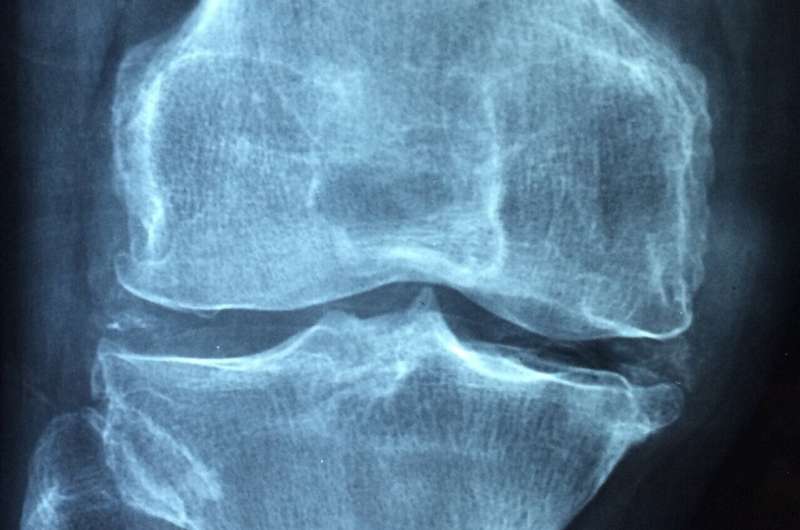This article has been reviewed according to Science X's editorial process and policies. Editors have highlighted the following attributes while ensuring the content's credibility:
fact-checked
trusted source
proofread
Calcium crystal deposits in the knee found to contribute to joint damage

Knee osteoarthritis (OA) is the most common form of arthritis, affecting approximately 600 million people worldwide and 34 million people in the U.S. There are no treatments available that prevent its progression to date. Recommended pharmacological treatments for symptoms have either small-to-moderate effects or short-term effects, often with side effects, and lifestyle behaviors such as exercise and weight loss are under-utilized.
Historically, intra-articular mineralization (IAM) or calcium crystal deposits in the joint were thought to be of no clinical consequence and perhaps just something that happens with older age.
However, using computed tomography (CT), researchers at Boston University Chobanian & Avedisian School of Medicine have found that calcium crystal deposits in the knee can contribute to the worsening of joint damage. The researchers are the first to use computerized X-ray imaging, which has a markedly higher sensitivity for detection of mineralization than radiography (X-rays) to confirm IAM in the knee.
"The cartilage damage is most likely to occur in the same locations where the crystals are deposited, suggesting a localized effect. We have also shown that these crystals can contribute to knee pain in another recently published paper. Taken together, these findings highlight the important role of calcium crystals in structural damage and symptoms in knee osteoarthritis," explains corresponding author Tuhina Neogi, MD, Ph.D., professor of medicine at the school.
Participants from the Multicenter Osteoarthritis (MOST) Study were evaluated for the association of IAM based on its location within the knee: anywhere in the knee, in a specific compartment of the knee (medial or lateral), and in specific sub-regions of the knee on CT at baseline with cartilage worsening on MRI over two years.
The researchers found that by using CT technology, they were able to detect a higher amount of deposits than previously found by plain radiographs. With this improved detection, they found an increased risk of cartilage damage on follow-up, including among knees without damage to begin with, supporting a pathogenic role for calcium crystal deposition within the joint.
"Our findings suggest potential localized, tissue-specific effects of IA mineralization on cartilage pathology in knee OA," explains Jean Liew, MD, MS, assistant professor of medicine at the school and first author of the paper.
"Now that this has been identified, we can begin to focus on identifying ways to prevent these crystal deposits from occurring to hopefully relieve pain and limit progression of joint damage in osteoarthritis," added Neogi, who also is chief of rheumatology at Boston Medical Center.
This study appears online in the journal Arthritis & Rheumatology.
More information: Jean W. Liew et al, Intra‐Articular Mineralization on Knee CT and Risk of Cartilage Damage: The Multicenter Osteoarthritis Study, Arthritis & Rheumatology (2024). DOI: 10.1002/art.42832


















